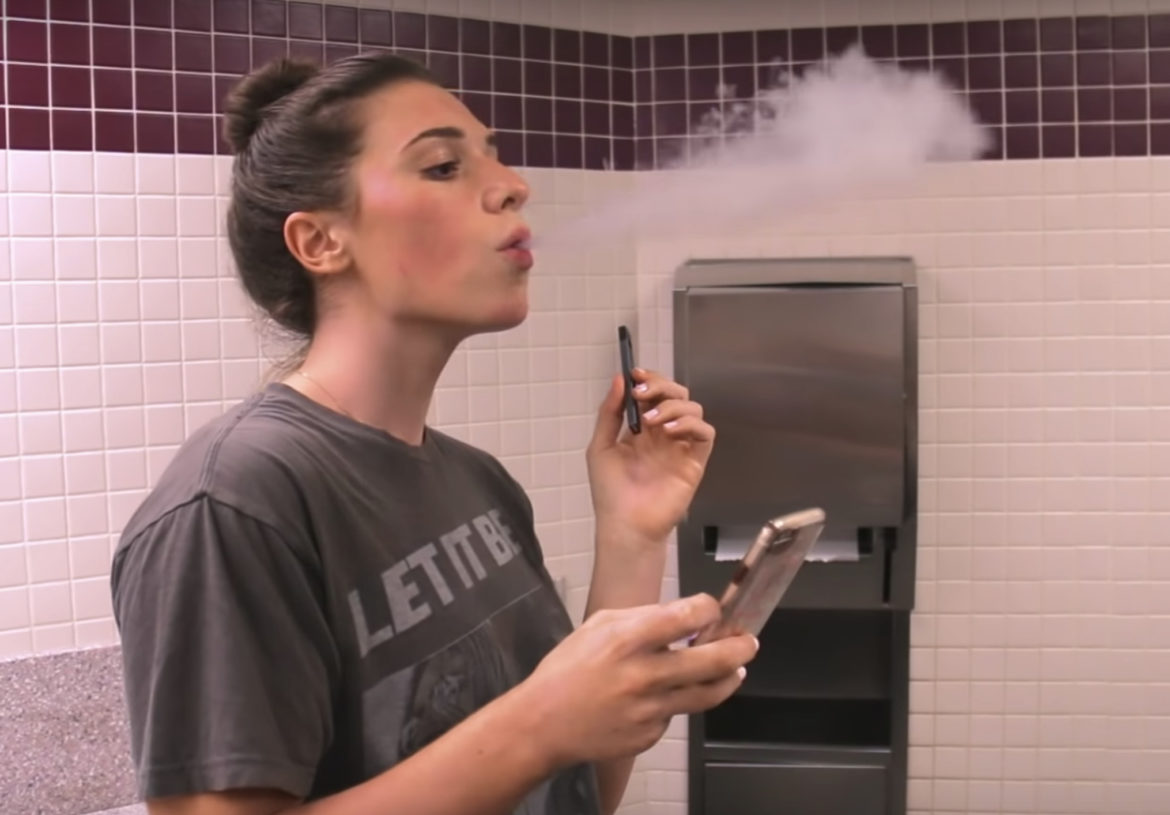Each day, for every 3 minutes in American schools, there’s a hidden epidemic: a student who vapes. Public health professionals label teenage vaping a full blown crisis. According to the CDC more than 40% of high school students and over 80% of middle schoolers who have tried e cigarettes. The majority of them (99%) have nicotine in them, an addictive chemical which rewires the developing brain and is often used as a gateway for smoking cigarettes. Teachers, parents and administrators feel a growing pressure to act. Vape detectors are an advanced technological tool that is rapidly becoming an essential part of all campuses. Triton and 3D Sense are the two most advanced vape detectors that schools can make use of. They can do more than just make an alarm sound.
How do Vape Detectors Function: Precision, Without Intrusion
A modern vape smoke detector like the Triton UTRA Smart Safety Sensor does not rely on audio or cameras to ensure absolute privacy while still delivering actionable intelligence. The device utilizes advanced particulate sensors to study the air in near-real time. When vape aerosols (like heavy perfumes) smoke from cigarettes or marijuana vapor are detected, the device will send an instant alert via text message or email to designated employees. False positives are very low, giving administrators confidence that any notification will receive immediate attention.

One unit is able to cover the entire bathroom, locker or hallway, making the deployment of this product cost-effective. Triton customers usually report a drop in vaping within five weeks. What is the reason? Data-driven deterrence. The Triton Cloud Dashboard shows “hotspots” where vaping occurs most frequently and at what moments, allowing authorities to redirect hall monitors and security personnel precisely where they’re needed.
Beyond Detection, Occupancy Visibility and Loitering control
What sets Triton apart from basic vape detectors is its patent-pending occupancy visualization technology. Without capturing images or sound it is the ULTRA sensor monitors the number of people as well as the duration of their stay in these zones. Administrators are able to see colored heatmaps that show when bathrooms have become an area of socialization and a place where vaping is common.
Stanford Medicine’s research underscores the importance of this issue students who smoke have a five-fold higher risk of contracting COVID-19. Through reducing congregation smoking, vape detectors in schools can improve air quality, and lower transmission risk for all airborne pathogens. Following the pandemic, this benefits have elevated these devices from optional to mandatory.
Transforming Data into Discipline and Dialogue
The numbers tell a compelling tale. The reports module of Triton provides quantitative evidence of incident dates and timestamps as well as locations. It also shows trends in frequency. Schools are able to present this information to school boards, parents ‘ groups as well as students. Skepticism begins to fade when an institution reports a 60 percent decrease in detections since detectors were placed in place. Parents will realize that students are committed; they will also be aware of the consequences.
The educators can increase the impact of their message simply by announcing the fact that vape smoke detectors will be available starting from day one. 3D Sense, for example is advertised as a preventative. The guidance material recommends that students are made aware that the air is monitoring them. The social impact of announcing an alert can be higher than any presentation.
A Multi-Front Strategy Schools Can’t Ignore
Vape detectors can’t stop vaping on their own, but they’re a component of a comprehensive solution.
Alerts in real-time identify incidents in progress.
Education – Research-based findings have been a driving force behind anti-vaping programs.
Prevention – Clearly visible signs and other known consequences alter the behavior.
Discipline – Hotspot data justifies targeted enforcement.
Support for Students – Schools provide tools to help struggling students quit smoking.
The CDC emphasizes that changing the trend will require “buy-in from parents, teachers and the public.” Vape detectors supply the missing link: immediate, objective feedback that can turn good intentions into tangible outcomes.
Deployment Made Simple
Triton Cloud Dashboard makes it easy to add your devices. Administrators add contacts to the dashboard, set alert thresholds, as well as customize the rules for notification. A brief demonstration demonstrates the ease of use that this interface offers. is. You can schedule a demo to view live hotspot maps and historical graphs in the action.
Conclusion
Each puff ignored could mean an addiction that lasts for a lifetime. Every bathroom activity which is not spotted is an hazard to your health and safety. Vape detectors for schools such as Triton and 3D Sense offer more than surveillance. They also provide intelligence, deterrence, and evidence of the progress. The campuses that install them aren’t merely reacting to the growing vaping problem they are also regaining control.
These tools transform vague worries into concrete wins. With just one sensor per room and an insight into the privacy of occupancy, they can transform vague fears into tangible ones. In a time when 40 percent of high schoolers have already embraced the idea in middle school, and the number of middle school students increasing daily, waiting longer seems sensible. Be sure to be the first to know what your school’s media is declaring.
